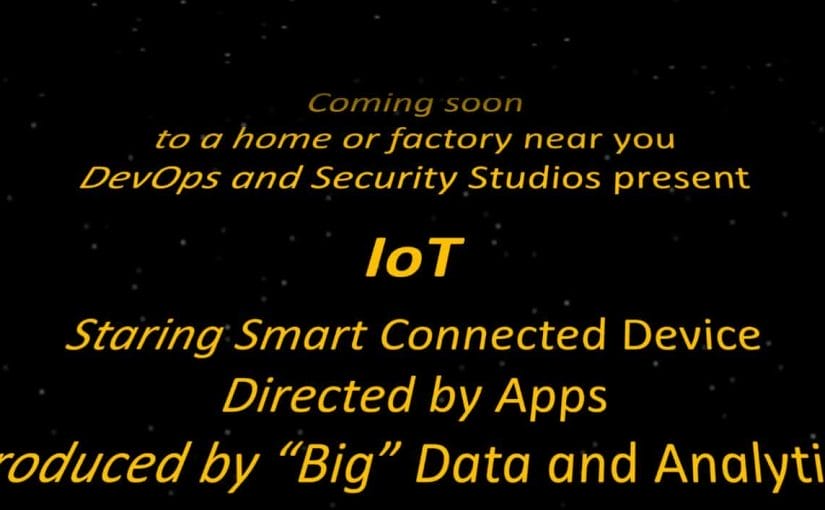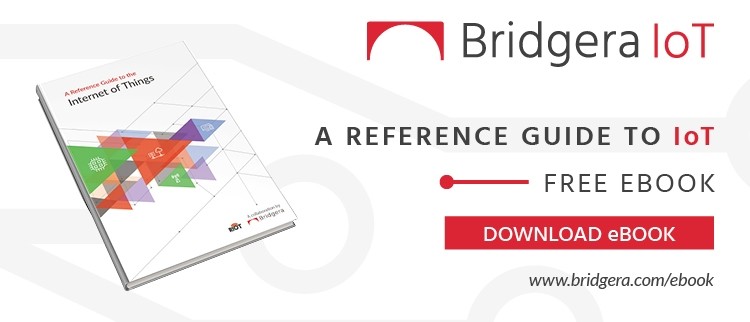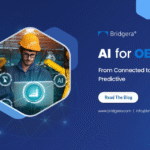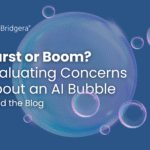It is hard to avoid hearing the term IoT or the tremendous business opportunities created by IoT. But what does IoT really mean to the beneficiary (i.e., the end using customer)? What happens behind the scene?
The Internet of Things (IoT), as defined by Wikipedia, is the network of physical devices, vehicles, buildings and other items—embedded with electronics, software, sensors, actuators, and network connectivity that enable these objects to collect and exchange data.
This definition does not give enough credit to what happens beyond the physical devices.
The Scope of IoT
The IoT opportunity is commonly segmented into unique industries and applications as pictured in the figure below provided by IoT Analytics.
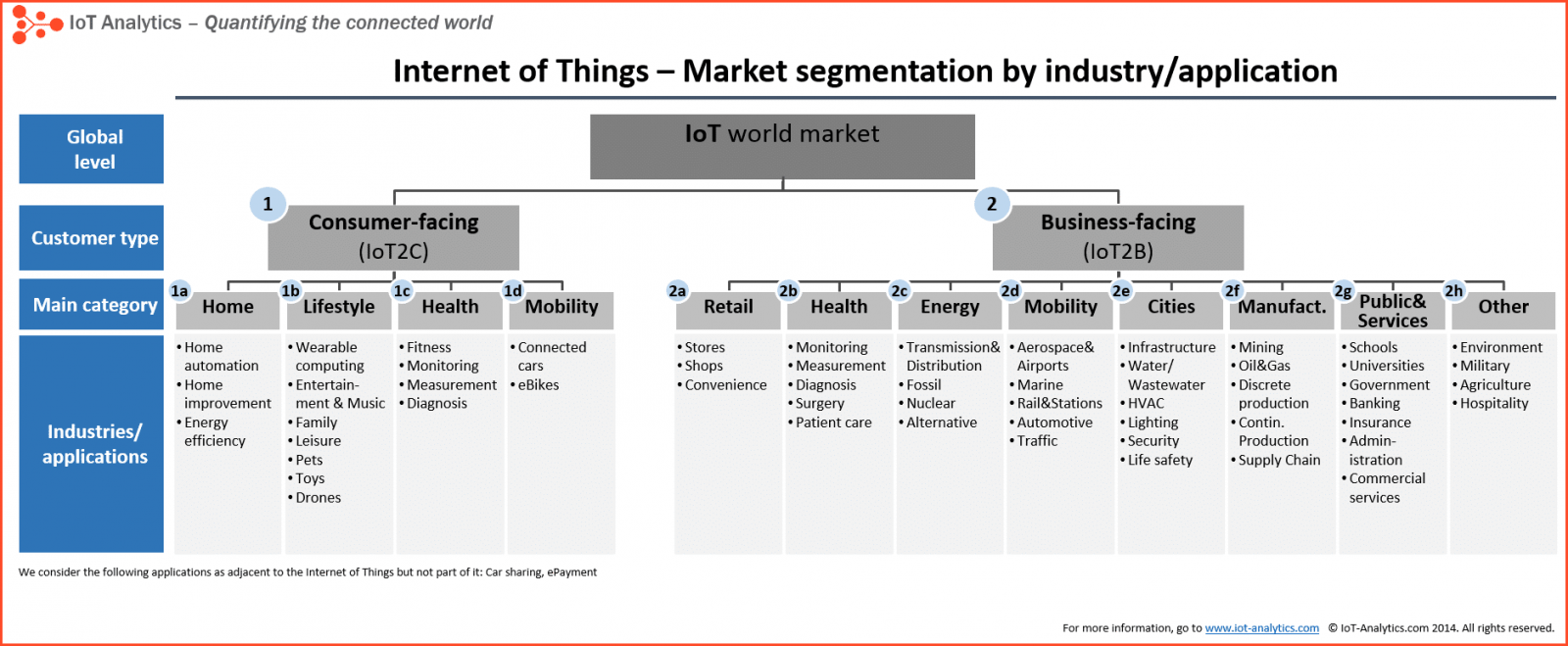
The beneficiaries’ perception of an IoT Solution will most certainly vary across Industry/Application combinations. Behind the scenes, there are four IoT components that make an IoT Solution complete. These components seem to be the same across all industries and applications.
Four Components of an IoT Solution

Smart Connected Devices
A smart connected device is the “Star of the Show” in the IoT world. Examples are Fitbits and Nest thermostats in the consumer world. Smart meters, security monitors, and vehicle tracking in the business world. A device, qualifying as “Smart” and “Connected”, will consist of five layers as shown in Figure 3.

Physical Properties (Form Factor)
What you see and touch. The object that can be held, worn, mounted, buried, attached, etc. These physical objects are made smart by an on-board sensor system with Firmware.
Sensor System
A smart connected device will have at least one sensor for collecting data or triggering commands. A sensor system will capture a change in the environment (what it sees or feels), convert it to electrical pulses, amplify the pulses, and deliver the pulse information to firmware. Accelerometers, Gyrometers, Compasses, GPS Receivers, Microphones, and Cameras are examples of commonly used sensors.
Firmware
Firmware is software programmed into read-only memory (ROM). In the case of a smart connected device, the firmware is programmed into on-board ROM. This is a minimum requirement for making a physical device “smart”. The firmware receives pulse information from the sensor system and takes action. This action may involve converting the pulse information to usable data (i.e., a temperature reading) and sending the data to the connectivity system. Or, it may trigger a command that would be sent to the control system. Firmware can also include capabilities to perform analytics or calculations prior to delivering data or sending a command.
Control System
The control system enables the device function, how it moves or behaves beyond its static state. This can consist of a series of mechanical components such as actuators, cams, or levers. Or, it can consist of electronic components such as a display reading. It is not unusual to see the control system built into the firmware, especially in use cases where there is no physical movement of the device but perhaps a change in an on-board display.
Now we have a Smart Device, next we must make it connected.
Connectivity
A smart connected device will have an on-board way to communicate with other devices. The receiving device can be a computer server in the Cloud, another smart connected device, a centralized hub or gateway, or perhaps an edge server (for simplicity sake, a computer server near the smart connected device). The smart connected device must have a mechanism to transmit and or receive information and must communicate in a common language with the device on the other end.
There are many different methods for a smart connected device to transmit and communicate. Common technologies for transmitting include cellular network, Wifi, Bluetooth, RFID, and near field communication (NFC). Common communication protocols include REST, SOAP, SMPP, MQTT, XMPP (OK, too technical, ultimately data is transmitted back to a server via an internet connection in a language / protocol that the receiver understands).
Power System
All of the above requires power. Thus a power system is a must have on a smart connected device. There are two main sources of power, a battery or a plug. A significant part of the design challenge controlling size, weight, quality, and price in a smart connected device is power related.
Now that we have a better understanding of what makes up a Smart Connected Device, on to the rest of the story.
IoT Beyond the Device
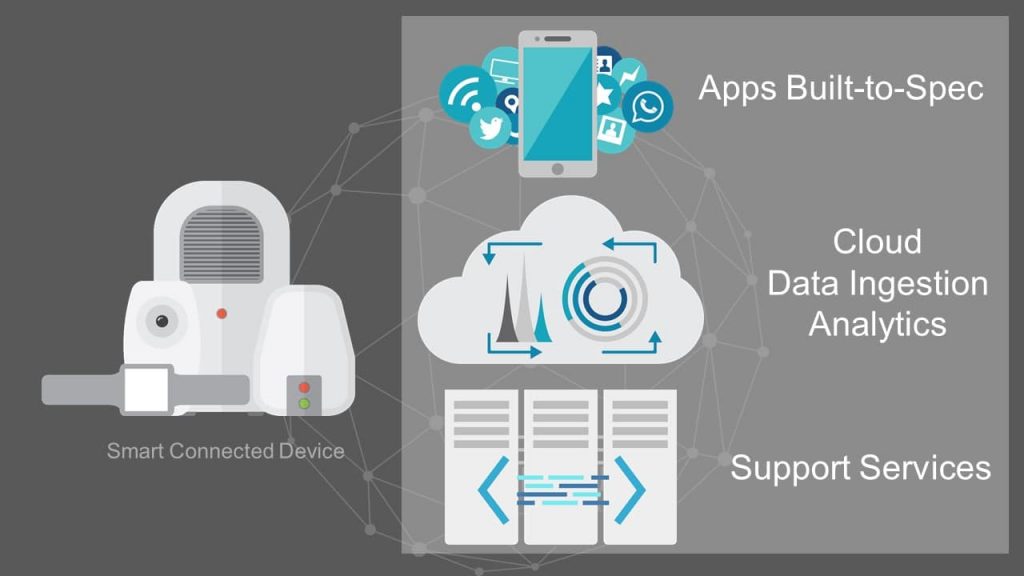
The rest of the IoT Solution just happens from the perspective of the beneficiary. However, you could argue that the real value happens beyond the Smart Connected Device. If the Smart Connected Device is the “Star of the Show”, the rest of IoT is the Director, Producer, and Studio.
Each of the remaining three components of an IoT Solution are identified by their own layers of capabilities as shown below:
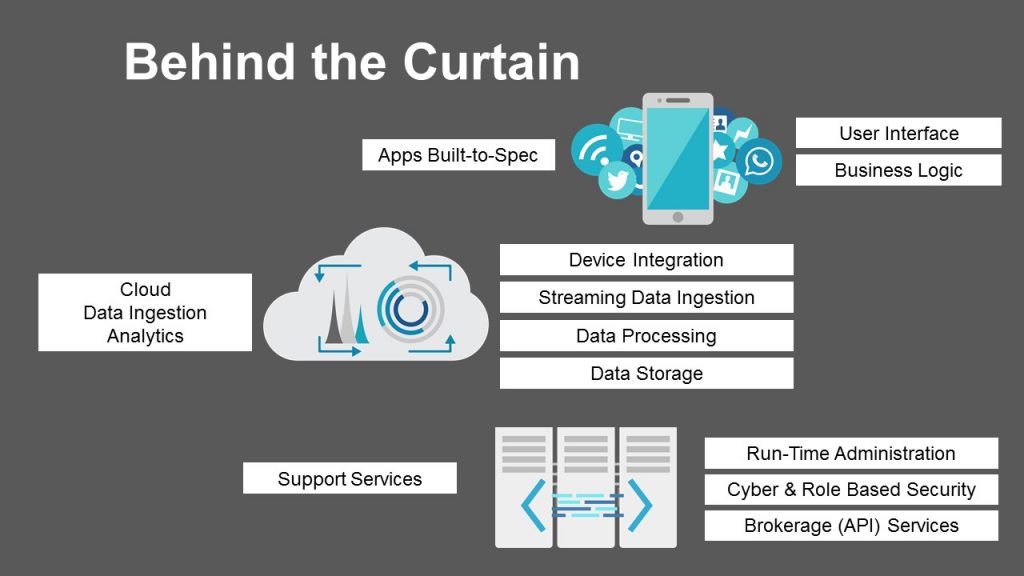
Apps
Apps consist of a User Interface (UI) layer and a Service Layer.
The UI of an App is a remote window into a device, viewed with a web browser (or mobile app). It can also be the access portal for data collected from a collection of devices. An IoT application will have at least one UI but often times more. There may be a UI for the end user and another UI for a dealer and perhaps a third for a service provider.
An app won’t do much without a Service Layer. In its simplest form, the service layer applies logic to available data and presents it to the UI. But it does much more than that. It provides the capability to communicate with services that are complimentary to the Smart Connected Device (payment services, telecom services, help desk services, command centers).
Cloud, Data Ingestion, Analytics
The device communication layer allows the back end system to communicate with smart connected devices (see Connectivity above).
The data ingestion layer accepts data coming from the smart connected device.
The data processing layer applies simple or complex logic to the streaming data, invoking a reaction such as sending a command to a device, storing the data, sending an alert to an User Interface.
The data persistence layer (storage) subsequently stores the streaming data as well as the derived insights making all available for further analytics and export into downstream applications.
It is the Data and Analytics component that you will find Big Data technology playing a predominant role given the large volume of data having wide variety of structures potentially streaming from smart connected devices at a high velocity.
Support Services
Run-Time Administration
If it is not evident, the IoT system is complex. Rarely are the skills needed available in one or even a few individuals.
As an example, excluding the technology in the Smart Connected Device, you will need development, QA, and operational expertise in the areas of user experience, user interface, web and mobile applications, system integration, infrastructure, cloud, networking, analytics, and databases. Much of the underlining technology (often referred to as Big Data) will require expertise in NoSQL databases (MongoDB, Cassandra, HBase), Hadoop eco system, data processing and analysis tools (Spark, Storm), and data ingestion tools (Kafka, Nifi).
Security
The IoT technology will be collecting and sending data to and from smart connected devices. When called upon, the entire IoT system must perform in a cloak of security (see CIA triad) to maintain confidentiality (rules that limit access), integrity (assurance that data is trustworthy and accurate), and availability (reliable access to data by authorized people).
Furthermore, security must be routinely considered as all four components of the IoT Solution are being developed to ensure that Admin and Security services accounted for as the IoT Solution is deployed.
API Services
A significant benefit of IoT is the use of public and provide data to enhance the data streaming from devices. Data provided by weather.com or Google Maps, for example, is accessible through APIs.
IoT Integrator
In the world of IoT, the Smart Connected Device is the Star of the Show. The IoT Software behind the scene consists of three critical components to pulling the IoT Solution together. Apps, Cloud/Data/Analytics, and Support Services. But we failed to mention one critical role. A role without, the main event would never get started. The “Screen Play Writer”. In the world of IoT, we might call this the IoT Integrator or the guy with the good idea!
Building a complete IoT solution requires a significant amount of creativity and technical expertise. The creativity piece is where the “writer” shines but in many cases, they find it more efficient to partner or acquire the technical expertise. Alternatively, and common in startups, a writer, or IoT Integrator might also take on device development, i.e., the Star of the Show (a la Sly Stallone in his creation “Rocky”) but look to a service provider to bring together the non-customer facing components to avoid direct staffing this skill set, minimize risk and control upfront costs.
What to do next
If you are an IoT Integrator with an idea that fits within a market/industry, you may be looking to capture that market by sourcing the components given the time and expertise required to build from scratch.
If you are a Device Maker, your expertise and competitive differentiation is in a Smart Connected Device. Perhaps you are looking to partner with an IoT Integrator and or a back-end service provider with expertise in App development, Big Data, and DevOps.
If you are the end beneficiary of an IoT Solution, you now know what is behind IoT and are able to ensure that you are leveraging the entire scope with your investment.
Now that you have been behind the curtain, what do you think? Please give us your opinion or let us know how we can help.

